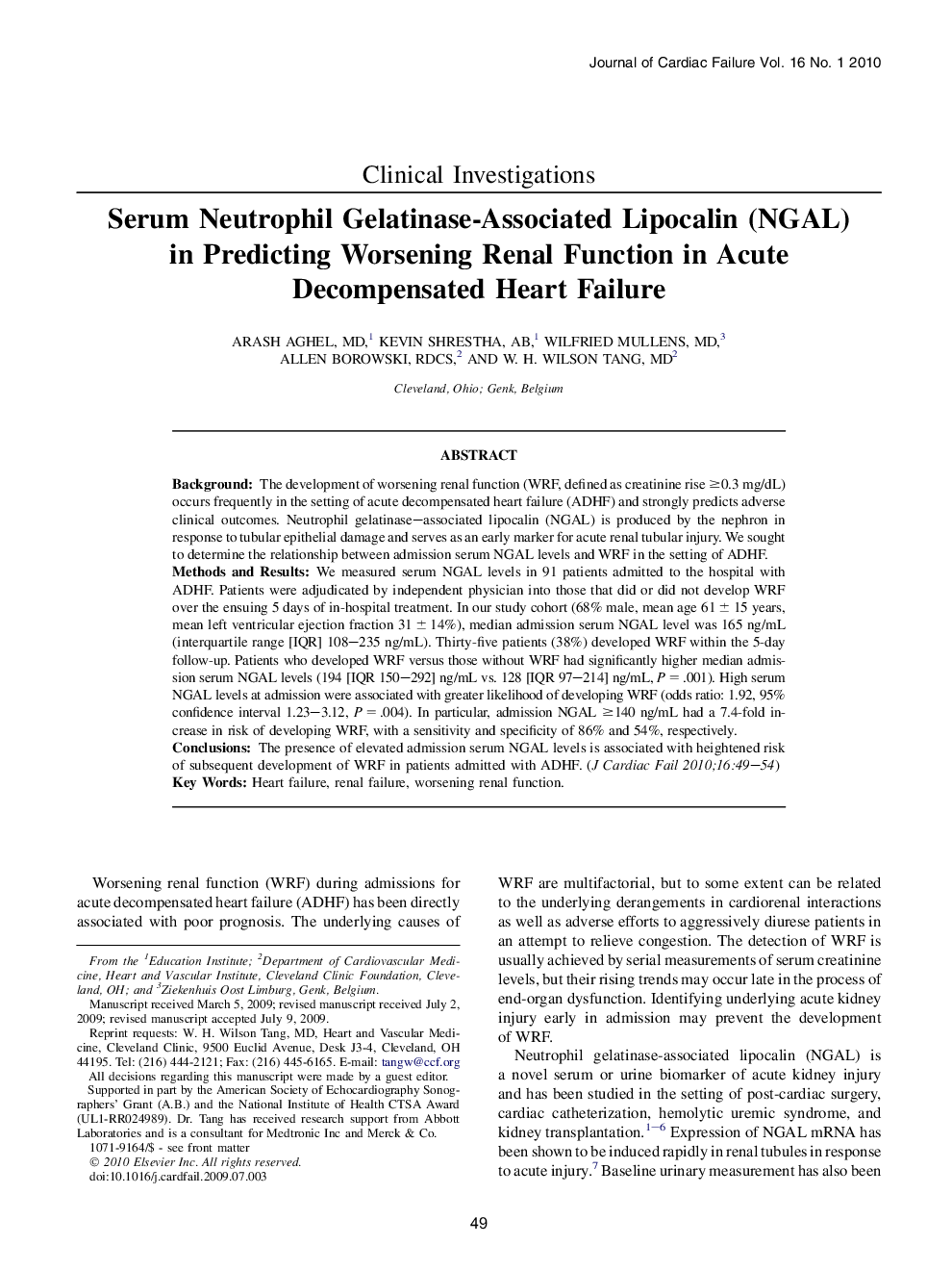| Article ID | Journal | Published Year | Pages | File Type |
|---|---|---|---|---|
| 2960446 | Journal of Cardiac Failure | 2010 | 6 Pages |
BackgroundThe development of worsening renal function (WRF, defined as creatinine rise ≥0.3 mg/dL) occurs frequently in the setting of acute decompensated heart failure (ADHF) and strongly predicts adverse clinical outcomes. Neutrophil gelatinase–associated lipocalin (NGAL) is produced by the nephron in response to tubular epithelial damage and serves as an early marker for acute renal tubular injury. We sought to determine the relationship between admission serum NGAL levels and WRF in the setting of ADHF.Methods and ResultsWe measured serum NGAL levels in 91 patients admitted to the hospital with ADHF. Patients were adjudicated by independent physician into those that did or did not develop WRF over the ensuing 5 days of in-hospital treatment. In our study cohort (68% male, mean age 61 ± 15 years, mean left ventricular ejection fraction 31 ± 14%), median admission serum NGAL level was 165 ng/mL (interquartile range [IQR] 108–235 ng/mL). Thirty-five patients (38%) developed WRF within the 5-day follow-up. Patients who developed WRF versus those without WRF had significantly higher median admission serum NGAL levels (194 [IQR 150–292] ng/mL vs. 128 [IQR 97–214] ng/mL, P = .001). High serum NGAL levels at admission were associated with greater likelihood of developing WRF (odds ratio: 1.92, 95% confidence interval 1.23–3.12, P = .004). In particular, admission NGAL ≥140 ng/mL had a 7.4-fold increase in risk of developing WRF, with a sensitivity and specificity of 86% and 54%, respectively.ConclusionsThe presence of elevated admission serum NGAL levels is associated with heightened risk of subsequent development of WRF in patients admitted with ADHF.
